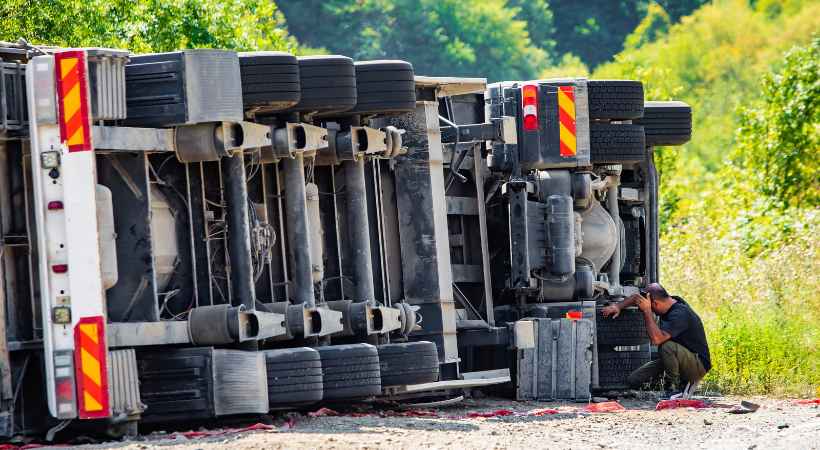
 Request FREE consultation - 1866-758-4529
Request FREE consultation - 1866-758-4529 
Stopping distance is a major factor in big rig rear-end collisions, and the Federal Motor Carrier Safety Administration estimates that about 20% of all trucking accidents are rear-end related crashes.
Rear-end collisions with big rigs are incredibly hazardous to the occupants in the vehicles they hit.
Some of the reasons for the severity of injury and frequency of 18-wheeler crashes include:
• A semi-truck can weigh 80,000 pounds, making it the hammer to the 5000-pound passenger car nail. The sheer weight difference between passenger vehicles and semi-trucks makes a rear-end accident much more likely to result in a fatality or a significant injury.
• Big rigs take up to 40% longer to stop, which makes a rear-end collision much more likely.
• A recent estimate by the DOT indicates there were over 23,000 people injured and 700 killed each year due to rear-end truck crashes.
In a car accident with a big rig, the car hit from the rear usually involves severe injuries.
When driving down the highway or interstate, taking extra caution by allowing a safe, clear distance with the vehicle ahead of you is a smart move. The same rule of thumb applies to cars behind you, and especially tractor-trailers. The stopping distance for the average car or pickup truck at 65 miles an hour is 316 feet. The stopping distance for an 18-wheeler at 65 mph is 525 feet!

The best way to prevent a rear-end truck accident is to make sure that the car in front of you is far enough away to stop should emergency braking be required. As the old saying goes, often, this is much easier said than done. As a practical matter, paying attention to your rearview mirror can save your life. If you have an 18-wheeler close behind, take steps when you can. Stay safe to let the vehicle pass. Or when you can safely do so, get ahead of it. If an emergency arises and requires immediate braking, you are much safer with a car behind you than an 18-wheeler.
Big rigs have the advantage of a much better view of traffic ahead than typical pickup trucks or cars. The better vantage points of slowing or stopping traffic should give the professional truck driver a slight edge in reaction time. Nevertheless, as set forth above, it just takes a semi-truck longer to stop.
Another area that can lead to someone being struck from the rear by a semi-truck is the presence of bad brakes on the big truck. Both the truck driver and the trucking company have a legal responsibility to ensure the semi is in proper and safe operating condition. The inspection and repair sections of the FMCSR are covered in Section 396. Unfortunately, it is only after a significant accident occurs, resulting in injury or death, that the defective condition of the brakes is discovered.
Read more here about stopping distance of big rigs.
Read more about what to do after a rear-end truck accident.
Related Articles:
Truckers failing to maintain a safe following distance
What You Need to Know About an 18-Wheeler Stopping Distance
Braking distance of semi trucks
Why Are Rear-End Collisions So Dangerous?
I Was Rear Ended By an 18-Wheeler in Houston What Do I do?
Understanding Rear-End Accidents Involving Commercial Trucks(Opens in a new browser tab)